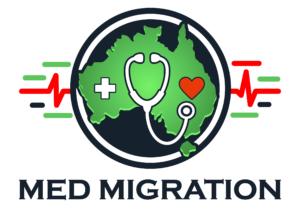Applying for an Australian skilled visa is an exciting step for healthcare professionals — but it can also be overwhelming. Whether you’re a doctor, nurse, midwife, physiotherapist, psychologist, or allied health professional, even small errors in your application can result in delays, refusals, or lost opportunities.
At MedMigration, we’ve seen how preventable mistakes can derail otherwise strong applications. In this guide, we’ll walk through the most common mistakes in skilled visa applications — and, more importantly, how to avoid them.
1. Submitting Without a Positive Skills Assessment
A skills assessment is one of the first and most important steps in any skilled migration visa. Without it, your Expression of Interest (EOI) will be invalid.
- Doctors → Australian Medical Council (AMC)
- Nurses & Midwives → ANMAC (Nursing & Midwifery Accreditation Council)
- Allied Health Professionals → See official Skills Assessing Authorities list
👉 Tip: Start your skills assessment early, as some assessments can take months.
2. Overestimating Points on the Points Test
Many applicants miscalculate their points for age, English language, or work experience. This can cause your EOI to be refused or ignored.
✔ Use the official Points Calculator before submitting your EOI.
✔ Double-check that your work experience and qualifications are recognised in Australia.
👉 Minimum is 65 points, but competitive rounds often require higher scores.
3. Choosing the Wrong Visa Subclass
Healthcare professionals often get confused between visa subclasses. Each has different requirements and pathways to permanent residency (PR).
- Subclass 189 – Skilled Independent Visa (Direct PR, no sponsorship required)
- Subclass 190 – Skilled Nominated Visa (PR with state/territory nomination)
- Subclass 491 – Skilled Work Regional Visa (Regional provisional visa with PR pathway)
- Subclass 186 – Employer Nomination Scheme (Direct PR with employer sponsorship)
- Subclass 482 – Temporary Skill Shortage Visa (Employer-sponsored, pathway to PR)
👉 Use the Visa Finder Tool to compare your options.
4. Ignoring Regional Opportunities
Many applicants overlook regional visas, even though these often offer faster processing, more sponsorships, and extra PR points.
Regional roles are available for:
- Doctors (General Practitioners, Specialists)
- Nurses & Midwives
- Allied Health Professionals (OTs, physios, psychologists, sonographers, etc.)
👉 Explore current regional vacancies here:
📌 Regional areas are defined using the Health Workforce Locator.
5. Missing English Language Requirements
Even highly qualified professionals can have their visa refused for not meeting English test requirements.
Most healthcare visas require:
- IELTS: 7.0 across all bands
- OET: B grade
- PTE Academic or TOEFL iBT: Equivalent
👉 Always take your English test early so you can resit if needed.
6. Waiting Too Long to Update Your EOI
An EOI remains valid for two years, but many applicants forget to update when their circumstances improve.
👉 For example:
- A higher English test score
- More years of work experience
- Gaining a new qualification
Updating your EOI can make you more competitive in the next invitation round.
7. Not Seeking Professional Help When Needed
Visa rules change often, and the migration process is complex. Going it alone without guidance can increase the risk of errors.
At MedMigration, we help:
- Identify the best visa subclass for your career
- Guide you through skills assessments and AHPRA/ANMAC registration
- Connect you with regional and employer-sponsored opportunities
- Support you from EOI to PR
✅ Final Thoughts: Get It Right the First Time
Applying for a skilled visa can be life-changing, but it’s also highly competitive. Avoiding these common mistakes — from points miscalculations to missing documents — can make all the difference.
By preparing carefully, using the official resources, and seeking expert support, you’ll maximise your chances of success.
📩 Ready to apply for your skilled visa with confidence?
👉 Contact MedMigration for expert assistance today.


Comments are closed